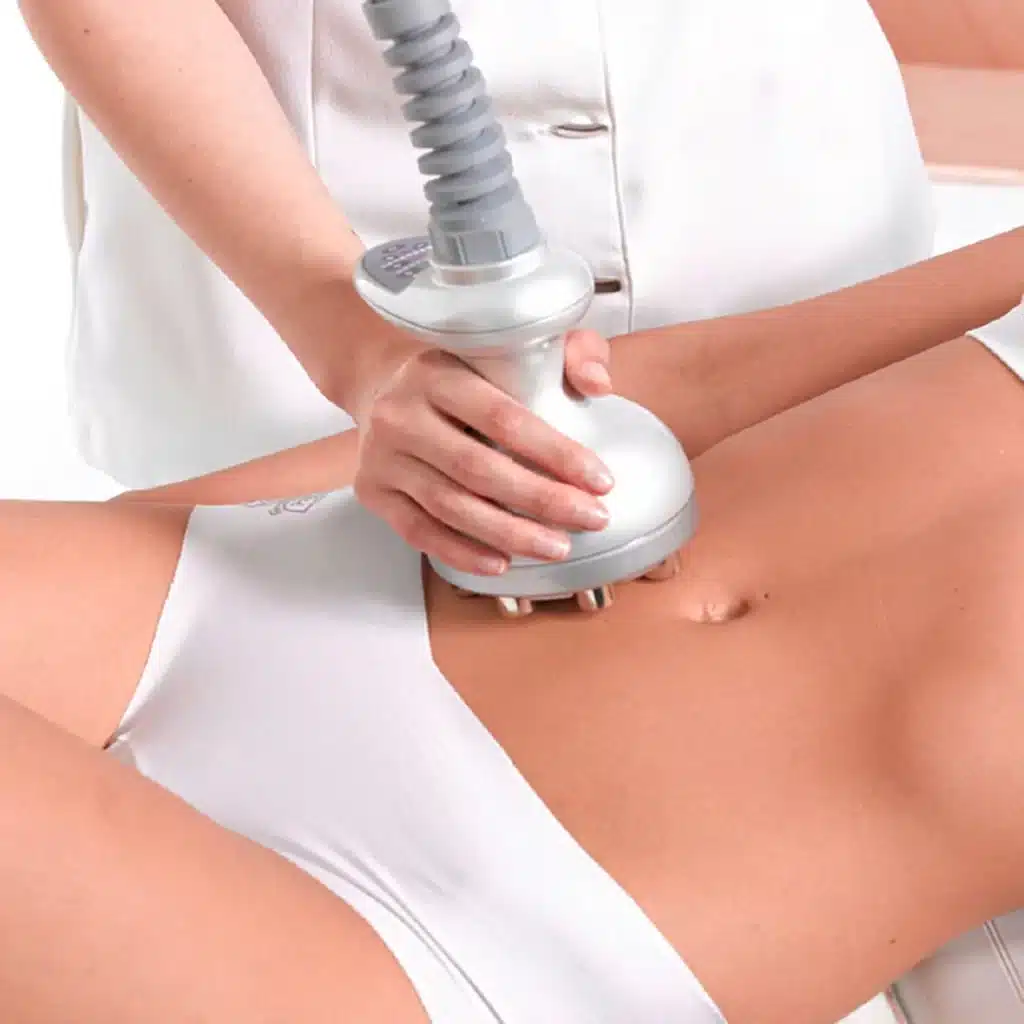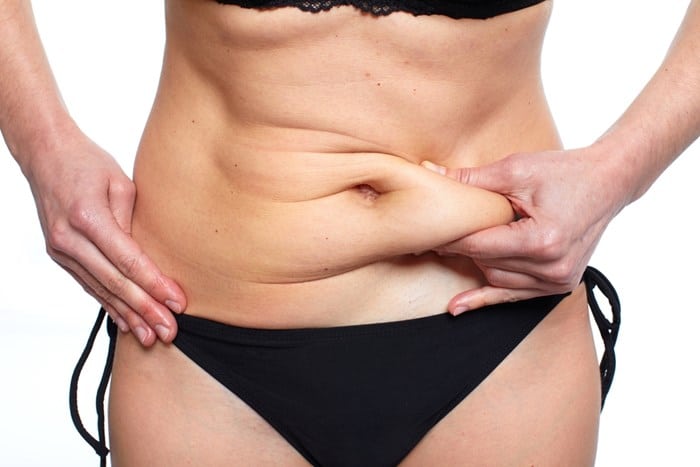Ultrasound-assisted liposuction, also known as ultrasonic liposculpturing, is changing the game in body contouring and liposculpture. Unlike traditional liposuction and invasive procedures, this innovative assisted liposculpture technique uses sound waves to break down fat cells more effectively in form. The result? Less trauma, faster recovery, and smoother results.
Patients often experience less swelling and bruising compared to older methods of liposuction surgery and other invasive procedures during liposuction recovery. This means getting back to daily life quicker. Many people are drawn to ultrasound-assisted liposuction for its precision and effectiveness. It targets stubborn fat areas that diet and exercise can’t touch with ultrasound lipo, an assisted liposuction procedure. With this method, you can achieve a more sculpted look without the long downtime associated with traditional procedures. It’s time to explore how ultrasound-assisted liposuction can transform your body and boost your confidence.
Key Takeaways
- Ultrasound-assisted liposuction uses sound waves to break down fat cells, making the procedure less invasive than traditional methods.
- It is beneficial for patients seeking more precise body contouring, especially in areas that are hard to treat with regular liposuction.
- While it offers advantages like quicker recovery and less bruising, it’s essential to discuss potential drawbacks, such as higher costs and specific risks.
- Patient satisfaction tends to be high due to the improved results and shorter downtime compared to traditional liposuction.
- Always consult with a qualified professional to determine if ultrasound-assisted liposuction is suitable for your body type and goals.
- Post-procedure care is crucial; follow your surgeon’s guidelines closely to ensure optimal recovery and results.
What is Ultrasound-Assisted Liposuction
Ultrasonic Technology
Ultrasound-assisted liposuction uses ultrasonic waves to liquefy fat in specific areas of the body. This technology helps break down fat cells, making them easier to remove. The process involves a specialized device that emits sound waves. These waves target fat deposits without harming surrounding tissues.
The procedure typically occurs under local anesthesia. Surgeons insert a thin cannula into the targeted area. The ultrasonic energy then transforms the fat into a liquid state. This allows for easier extraction through suction.
Targeted Areas
This technique effectively addresses stubborn fat deposits. Common areas include the knees, neck, chin, feet, and ankles. Many people struggle with these regions despite diet and exercise efforts. Ultrasound-assisted liposuction provides an option to contour these areas.
Fat removal in these locations can enhance body proportions and improve self-confidence. Patients often seek this treatment for aesthetic reasons. It offers a solution when traditional methods fail.
Body Contouring Goals
The primary aim of ultrasound-assisted liposuction is to contour the body. It specifically targets troublesome fat deposits that resist other weight loss methods. By removing excess fat, patients can achieve a more sculpted appearance.
Surgeons design the procedure to create smooth, natural-looking results. The technique minimizes trauma to surrounding tissues. This leads to less swelling and quicker recovery times compared to traditional liposuction.
Patients should have realistic expectations about the outcomes. While it can improve body shape, it is not a weight-loss solution. Ideal candidates are usually at or near their target weight but want to refine their silhouette.
Recovery Process
Recovery from ultrasound-assisted liposuction varies by individual. Most patients experience some swelling and bruising post-procedure. These effects generally subside within a few weeks.
Surgeons often recommend wearing compression garments after surgery. These garments help reduce swelling and support healing. Light activity may resume shortly after the procedure, but vigorous exercise should wait for several weeks.
Follow-up appointments allow surgeons to monitor progress and address any concerns. Patients should discuss all aspects of recovery with their healthcare provider.
How Ultrasound Liposuction Works
Ultrasonic Methods
Ultrasound liposuction uses sound waves to break down fat. This approach involves two main techniques: internal and external. The internal method employs a probe that emits sonic vibrations inside the body. These vibrations target fat cells, causing them to liquefy.
The external method utilizes a paddle-like tool. This device emits vibrations through the skin without making any incisions. Both methods help in breaking down fat tissue effectively.
Liposuction Cannula
After the ultrasonic waves have liquefied the fat, a liposuction cannula is used to remove it. The cannula is a thin tube inserted into the body through small incisions. It works by suctioning out the melted fat from the targeted areas.
This process allows for precise fat removal. Surgeons can contour the body more effectively using this technique. The use of ultrasound makes the procedure less invasive than traditional methods.
Benefits of Ultrasound Delivery
Ultrasound delivery offers several advantages over conventional liposuction technologies. First, it minimizes damage to surrounding tissues. The ultrasonic waves specifically target fat cells while preserving other structures.
Second, patients often experience less bruising and swelling after surgery. The controlled nature of ultrasound lipo leads to a quicker recovery time. Many individuals return to their daily activities sooner.
Safety and Effectiveness
Safety remains a priority in ultrasonic liposuction procedures. Surgeons must be trained in using an ultrasonic liposuction machine properly. Proper training ensures that they can handle the equipment safely and effectively.
Studies show that ultrasound-assisted liposuction achieves significant fat reduction with fewer complications. Patients report high satisfaction rates with their results.
Ideal Candidates
Not everyone is a candidate for ultrasound-assisted liposuction. Ideal candidates are those close to their target weight but struggle with stubborn fat pockets. Individuals should also have good skin elasticity for better results.
Consultation with a qualified surgeon is essential before deciding on this procedure. They will evaluate individual health conditions and discuss potential outcomes.
Differences Between Ultrasound and Traditional Liposuction
Energy Use
Ultrasound-assisted liposuction uses energy to break down fat cells. This method utilizes ultrasonic waves to disrupt fat tissue. The energy creates vibrations that cause the fat cells to liquefy. This process allows for easier removal of fat.
Traditional liposuction, on the other hand, does not employ this technology. Instead, it relies on physical manipulation to extract fat. Surgeons use a cannula, or tube, to suction out the unwanted fat. This can be more invasive and may lead to longer recovery times.
Precision Targeting
Ultrasonic methods allow for greater precision in targeting specific fat deposits. Surgeons can focus on areas that are typically harder to treat. For example, stubborn pockets of fat around the abdomen or thighs can be addressed more effectively with ultrasound.
Standard liposuction may not provide the same level of accuracy. The physical nature of traditional techniques can lead to uneven results. Patients might experience lumps or irregularities after the procedure. This is less common with ultrasound-assisted methods due to their targeted approach.
Recovery Time
Recovery time varies between these two procedures. Patients undergoing ultrasound-assisted liposuction often report less discomfort post-surgery. The energy used in this technique minimizes trauma to surrounding tissues. As a result, swelling and bruising may be reduced.
Conversely, traditional liposuction usually involves more pain and longer recovery periods. The physical manipulation required can lead to more significant tissue damage. Patients may need more time off work and activities to heal properly.

Effectiveness
Both methods aim to remove unwanted fat effectively. However, studies suggest that ultrasound-assisted techniques can yield better results for certain individuals. The ability to liquefy fat allows for smoother contours and less risk of irregularities.
Various liposuction techniques exist today, but not all are equal in effectiveness. Ultrasound-assisted liposuction has gained popularity for its efficiency and reduced side effects.
Cost Considerations
Cost can also differ between these two options. Ultrasound-assisted liposuction tends to be more expensive than standard liposuction. This is due to the advanced technology and specialized training required for surgeons.
Patients should weigh the benefits against the costs when considering their options. Understanding both procedures helps in making an informed decision about which method is best suited for their needs.
Benefits of Ultrasound Liposuction
Effective Fat Removal
Ultrasound-assisted liposuction is effective for removing fat from hard-to-reach areas. These areas often include the abdomen, thighs, and arms. Traditional methods may struggle with these spots. Ultrasound technology helps to break down fat cells. This process allows for easier extraction. As a result, many patients experience better liposuction results.
The technique uses sound waves to liquefy fat before removal. This method targets specific layers of fat without damaging surrounding tissues. In contrast, manual liposuction can be more invasive. The precision of ultrasound makes it a preferred choice for many patients.
Smoother Skin Appearance
Another benefit is the potential for smoother skin after the procedure. Unlike traditional liposuction, which can leave uneven surfaces, ultrasound-assisted methods promote even fat removal. This leads to improved skin texture and contour. Patients often notice a significant difference in their appearance post-surgery.
The technology minimizes trauma to the skin and underlying tissue. As a result, there is less risk of irregularities or sagging skin after fat cell removal. Many individuals prefer this option for achieving a more natural look.
Quicker Recovery Times
Recovery times can be shorter with ultrasound liposuction compared to other techniques. The less invasive nature of the procedure contributes to this benefit. Many patients report returning to normal activities sooner than with traditional methods.
Average recovery time varies by individual but generally lasts one to two weeks. Patients may experience less swelling and bruising as well. This leads to a more comfortable recovery process overall.
Surgeons often recommend following specific aftercare instructions for optimal healing. Proper care can enhance the effectiveness of the fat loss procedure.
Versatile Applications
Ultrasound-assisted liposuction is versatile and can address various needs. It works well for both small and large volume fat removal. Surgeons often use it in combination with other techniques like tumescent liposuction or high definition liposculpting.
This versatility makes it suitable for many liposuction cases. Patients seeking targeted body sculpting find it particularly beneficial.
Potential Drawbacks of Ultrasound Liposuction
Nervous System Risks
Ultrasound-assisted liposuction can pose risks to the nervous system. The procedure uses sound waves to break down fat cells. This process may inadvertently affect nearby nerves in the targeted area. Damage to these nerves can lead to numbness or tingling. In some cases, patients may experience prolonged pain.
Surgeons must be cautious when performing this technique. They need to have a clear understanding of the anatomy involved. Patients should always discuss any concerns with their doctor before undergoing treatment.
Side Effects
Common side effects of ultrasound liposuction include bruising and skin necrosis. Bruising occurs due to the disruption of blood vessels during the procedure. It typically resolves within a few weeks but can be uncomfortable.
Skin necrosis is a more serious concern. This condition happens when blood flow to an area is severely reduced. It can lead to tissue death, which may require further medical intervention. Patients should monitor their recovery closely for any signs of complications.
Importance of Consultation
Consultation with a doctor is crucial before proceeding with ultrasound liposuction. A thorough evaluation helps assess suitability for the procedure. Doctors consider several factors, including medical history and overall health.
Not everyone is a good candidate for this technique. Individuals with certain health conditions may face higher risks. For instance, those with circulatory issues or skin disorders should approach this option cautiously.
During the consultation, patients can ask questions about potential outcomes and risks. Understanding what to expect helps in making an informed decision.
Comparing Effectiveness with Traditional Methods
Stubborn Fat Areas
Ultrasonic liposuction may provide better results for certain stubborn fat areas. This method uses sound waves to break down fat cells. It targets specific spots that are hard to reach with traditional liposuction. For example, areas like the abdomen and thighs often respond well to ultrasonic techniques. Patients seeking contouring in these regions might find this approach beneficial.
The technology allows for greater precision. Surgeons can remove fat without damaging surrounding tissues. This leads to less bruising and faster recovery times. Many patients appreciate the smoother results achieved through ultrasound-assisted methods.
Larger Volume Removal
Traditional liposuction may be more effective for larger volume fat removal. This method involves suctioning out fat directly from the body. Surgeons can remove more significant amounts of fat in one session compared to ultrasound methods. For individuals needing extensive body sculpting, traditional liposuction is often preferred.
Patients with higher body mass indexes (BMIs) typically benefit from this approach. They may require a more aggressive technique to achieve their desired results. Traditional methods also have a proven track record over many years, offering reliable outcomes.
Benefits and Limitations
Both methods have their own set of benefits and limitations depending on the patient’s needs. Ultrasound-assisted liposuction offers precision but may not suit everyone. Some patients may find traditional methods provide quicker solutions for larger areas.
Consideration of recovery time is essential as well. Ultrasonic procedures usually result in less downtime. However, they might take longer to show final results compared to traditional techniques.
It’s crucial for patients to consult with their surgeons about their goals. A thorough discussion can help determine which method aligns best with their needs and expectations.
Ultimately, choosing between these two invasive procedures requires careful thought. Each option has unique advantages that cater to different patient profiles and desired outcomes.
Patient Outcomes and Satisfaction
High Satisfaction Rates
Many patients report high satisfaction with ultrasound-assisted liposuction. This cosmetic procedure effectively removes fat while minimizing damage to surrounding tissues. The use of a specialized cannula enhances the fat extraction process. Patients often notice significant changes in their body shape after surgery.
Surveys show that most individuals feel pleased with their results. They appreciate the smoother contours achieved through this method. Positive feedback highlights the effectiveness of this surgical procedure in achieving desired body goals.
Boosting Self-Esteem
Positive body contouring results can significantly boost self-esteem and confidence. Many patients experience a change in how they view themselves post-surgery. Feeling more confident often leads to improved social interactions and personal relationships.
For example, someone who struggled with body image issues may feel liberated after undergoing the procedure. A new look can inspire individuals to embrace healthier lifestyles. This change may include better diet choices and increased physical activity.
Individual Expectations
Satisfaction levels can vary based on individual expectations and surgical outcomes. Some patients enter the process with high hopes for dramatic changes. Others may have more modest goals in mind.
Realistic expectations play a crucial role in overall satisfaction. Those who understand the limitations of cosmetic surgery tend to have a better experience. Clear communication with surgeons before the procedure helps set these expectations.
Patients should discuss their goals openly during consultations. Surgeons can explain what is achievable through ultrasound-assisted liposuction. This dialogue ensures that everyone is on the same page regarding potential results.
Pain Management
Pain management is another factor influencing patient satisfaction. Most undergo the procedure under local anesthesia, reducing discomfort during surgery. Many report only mild soreness afterward, which is manageable.
The recovery process varies among individuals but generally involves less pain than traditional methods. Faster recovery times contribute to higher satisfaction rates as well.
Long-Term Results
Long-term results also impact patient happiness with the procedure. Fat removal through ultrasound-assisted liposuction is permanent, as long as patients maintain their weight. However, lifestyle choices after surgery play a significant role in sustaining results.
Regular exercise and balanced diets help preserve body contouring benefits over time. Patients who commit to healthy habits often enjoy lasting satisfaction from their cosmetic surgery.
Recovery Time and Aftercare
Recovery Period
Recovery from ultrasound-assisted liposuction is generally brief. Most patients return to normal activities within a week. However, recovery time can vary significantly based on individual factors. Age, health status, and the amount of fat removed all play roles in how quickly one recovers. Some may feel ready to resume light activities after just a few days. Others might need more time for complete recovery.
Patients should expect some swelling and bruising post-surgery. These symptoms are normal and often resolve within a few weeks. Pain levels can differ among individuals. Some may require pain medication for comfort, while others may not need it at all.
Aftercare Instructions
Following specific aftercare instructions is essential for a smooth recovery. Surgeons typically provide detailed guidance tailored to each patient’s needs. This may include wearing compression garments to reduce swelling and support the healing process. Compression garments help improve blood circulation and minimize discomfort.
Patients should also avoid strenuous activities for several weeks. Heavy lifting or intense exercise can increase the risk of complications. Following the surgeon’s advice regarding physical activity is crucial for optimal results.
Hydration plays an important role in recovery as well. Drinking plenty of water helps flush out toxins from the body and aids in healing. A balanced diet rich in vitamins and proteins supports tissue repair.
Importance of Proper Aftercare
Proper aftercare is crucial to minimize risks associated with surgery. Neglecting aftercare can lead to complications such as infections or uneven results. Patients who follow their surgeon’s guidelines often report higher satisfaction with their outcomes.
Monitoring for signs of complications is also vital during recovery. These signs may include increased pain, unusual swelling, or fever. Promptly addressing any concerns with a healthcare provider can prevent more serious issues.
Attending follow-up appointments is necessary for assessing progress. These visits allow surgeons to check healing and address any questions patients may have.
Emotional Support
Emotional support during recovery cannot be overlooked. Many patients experience a mix of excitement and anxiety following surgery. Connecting with friends, family, or support groups can provide reassurance.
Sharing experiences with others who have undergone similar procedures can be comforting. It helps patients realize they are not alone in their journey to recovery.
Suitability for Different Body Types
Localized Fat Deposits
Ultrasound-assisted liposuction is suitable for individuals struggling with localized fat deposits. This method targets specific areas of the body. Areas like the abdomen, thighs, and arms often hold stubborn fat. Patients can see a noticeable reduction in these areas after the procedure.
The ultrasound technology helps break down fat cells more effectively than traditional methods. This allows for smoother results and less damage to surrounding skin. Many people find this appealing, as it reduces recovery time.
Weight Loss Expectations
This technique is not ideal for those seeking significant weight loss. Ultrasound-assisted liposuction focuses on contouring rather than losing large amounts of weight. Candidates should understand that this is not a weight-loss solution.
For effective results, patients should be close to their ideal body weight. Those with a higher body mass index (BMI) may not achieve the desired outcomes. They might not see a significant change in their overall appearance.
Ideal Candidates
Best results are seen in patients who have already achieved a stable weight but struggle with specific problem areas. These individuals often feel frustrated by their efforts to lose fat through diet and exercise alone.
Candidates should have good skin elasticity as well. Skin that is too loose may not respond well to liposuction techniques. The condition of the skin plays a key role in achieving smooth, even results.
Areas of Focus
Common areas treated include:
- Abdomen
- Thighs
- Hips
- Upper arms
- Back
These regions often accumulate fat despite healthy habits. Ultrasound-assisted liposuction can effectively contour these areas without excessive downtime.
Recovery Considerations
Recovery from this procedure can vary based on individual health factors. Patients should follow post-operative instructions closely to ensure proper healing. Minimal bruising and swelling typically occur, allowing many individuals to return to normal activities quickly.
Understanding personal goals is essential before undergoing the procedure. Discussing expectations with a medical professional can clarify suitability.
Final Remarks
Ultrasound-assisted liposuction offers a modern twist on body contouring. It combines advanced technology with effective results, making it a popular choice for many. You’ve learned about how it works, its benefits, and potential drawbacks. This method could be a game-changer for your aesthetic goals.
Understanding the nuances of ultrasound liposuction is crucial for making informed decisions. If you’re considering this procedure, consult a qualified professional to discuss your options and expectations. Your journey towards achieving the body you desire starts with knowledge and the right guidance. Don’t hesitate to explore this innovative approach further!
Frequently Asked Questions
What is ultrasound-assisted liposuction?
Ultrasound-assisted liposuction (UAL) is a cosmetic procedure that uses ultrasound technology to break down fat cells before suctioning them out. This technique enhances fat removal and can lead to smoother results.
How long does recovery take after ultrasound liposuction?
Recovery from ultrasound liposuction typically takes about one to two weeks. Most patients can return to normal activities within this timeframe, but full results may take several months to materialize.
Is ultrasound liposuction suitable for everyone?
Not everyone is a candidate for ultrasound liposuction. Ideal candidates are generally close to their target weight and have localized fat deposits. A consultation with a qualified surgeon will determine suitability.
Are the results of ultrasound liposuction permanent?
Yes, the results of ultrasound liposuction can be permanent, provided you maintain a healthy lifestyle. Weight gain can affect the outcome, so it’s essential to follow a balanced diet and exercise routine.
What are the risks associated with ultrasound liposuction?
Like any surgical procedure, ultrasound liposuction carries risks such as infection, scarring, and uneven results. Choosing a skilled surgeon minimizes these risks significantly.
How does ultrasound-assisted liposuction compare to traditional methods?
Ultrasound-assisted liposuction typically offers more precise fat removal and less trauma to surrounding tissues compared to traditional methods. This can lead to quicker recovery and improved contouring.
Can ultrasound liposuction treat cellulite?
Ultrasound liposuction primarily targets fat reduction rather than cellulite treatment. However, some patients report improved skin texture post-procedure due to the method’s effects on connective tissue.




